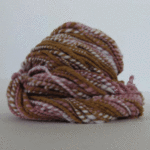If you are trying to lose weight or just stay healthy, you need to consider more than just the numbers on the scale. To accurately gauge your progress and overall health, experts agree that it is important to know your percentage of body fat. What are the best ways to measure body fat? It really depends on what you are looking for. Do you need accuracy, reliability, affordability or something readily available? Here are five of the best ways to measure body fat.
Best Ways to Measure Body Fat: Skinfold Measurement
Skinfold measurement is one of the most popular and well known tests used to measure body fat. When done properly it is easy, accurate, quick and economical, costing $20 -$40 per test. Skinfold measurement uses a tool called calipers to measure skin folds. The measurements are then used to calculate how much subcutaneous fat a person has.Subcutaneous fat is the fat just under the skin. A mathematical equation is used to calculate body fat percentage. There are calipers on the market that can be used by inexperienced people at home. To get an accurate measure of body fat however, skin fold measurement should be conducted by a qualified body composition analyst.
Best Ways to Measure Body Fat: Body Fat Scales
Body fat scales use a technology called bioelectrical impedance analysis (BIA) to measure body fat. In BIA, a small harmless electrical current passes through your body. The amount of resistance to the electrical current is measured and reported by the scale. Since the electrical current passes more quickly though tissues that are free from fat, the resistance measures how much of the body is fat free. Measurements are then used in a mathematical formula to calculate the percentage of fat.
Body fat scales have many of the same advantages as calipers. They are fast, inexpensive and convenient. The biggest advantage of using body fat scales to measure body fat is that they are so widely available and can be used anywhere. Even good quality calipers are more expensive than most body fat scales, with a decent scale costing from $50 to $100. BIA has also been added to some regular bathroom scales on the market. The main disadvantage to body fat scales is that they are super sensitive to body hydration.
Best Ways to Measure Body Fat: Hydrodensitometry Testing
Hydrodensitometry testing, commonly called underwater testing is considered the most accurate way to measure body fat. It is highly repeatable. The only variable that affects the results is body composition, which is what you are measuring. While scientifically the perfect way to measure body fat, this method does have some disadvantages. Underwater testing can be expensive and time consuming. It can also be hard to find, though most large universities offer the procedure. During the test, you get into a tank with a premeasured amount of water. The examiner then measures the amount of water you displace from the tank. This measurement is then put into a mathematical calculation to determine your body fat.
Best Ways to Measure Body Fat: BOD POD
The BOD POD test is similar to hydrodensitometry testing but without the water. BOD POD uses air displacement to measure body fat. During a BOD POD test, you get into a chamber and control your breath for 5 minutes. The BOD POD then measures the amount of air your body displaces from the chamber. BOD POD gives a body fat calculation to within 3% to 4% accuracy, about the same as DEXA. At $40 to $65 per test, BOD POD is one of the more inexpensive ways to measure body fat. It is also easier and more convenient than underwater hydrodensitometry testing. It has become more widely available in recent years.
Best Ways to Measure Body Fat: DEXA Scans
DEXA is short for dual energy X-ray absorpitometry. DEXA is a low radiation full body x-ray. The technology is the same as that used to measure bone density in osteoporosis patients. DEXA is superaccurate, easy and noninvasive. It is also a bit on the pricey side costing $200 to $300. During a DEXA scan, you lie on an x-ray table while a scanner measures your body fat, muscle mass and bone mineral density. The test only takes about 10 minutes. Soon, DEXA scans will be available at doctor’s offices, from physical therapists, and in health clubs.
Sources
WebMD


